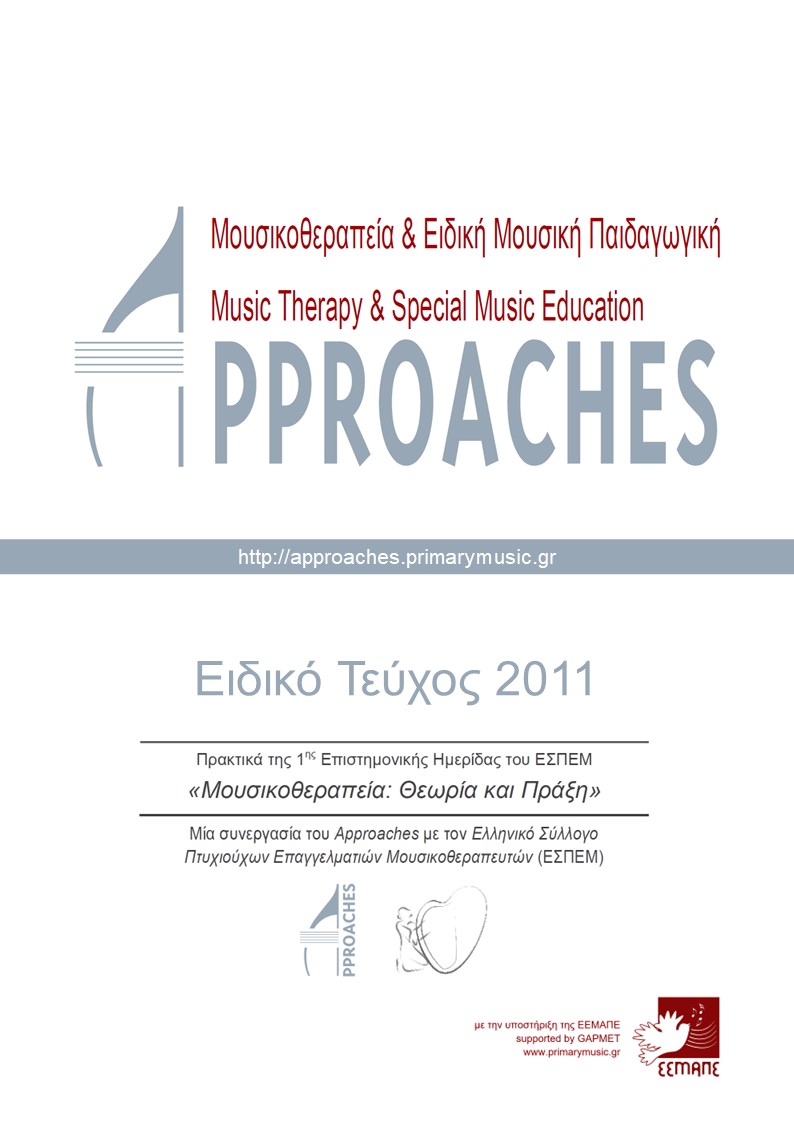“What is Essential is Invisible to the Eye” – A Music Therapy Tale of a Young Woman with Visual Impairment
DOI:
https://doi.org/10.56883/aijmt.2011.531Λέξεις-κλειδιά:
case study, individual music therapy, visual impairment, disability, singing, performance, community music therapyΠερίληψη
This article describes the case of Maria, a young woman with visual impairment and mild learning difficulties, whose involvement in music therapy helped her develop an understanding of the importance of music for her personal life. Whereas in the sessions her verbal comments about herself were very negative to start with, focusing on her back pains and everyday problems caused by her visual impairment, her singing brought to light a gifted musical personality in the course of therapy who felt strongly about her musicality. During a period of one and a half years of individual music therapy sessions at a creative day centre for people with disabilities, Maria developed a strong sense of confidence in her musical abilities, which made her believe more in herself as a musician. The joy of music making and singing as well as the interpersonal therapeutic relationship based on mutual trust and respect made her focus away from perceiving herself as ‘disabled’ and engage in searching for a new musical identity. The case study summarises this process and explains how Maria was helped by temporarily ‘stepping out’ of the boundaries of therapy in order to communicate her musical skills to a wider community at the annual summer concerts where she could ‘try out’ this new identity.
The case of Maria shall further be used to reflect on how disabled people in Greece can find support at local creative day centres, which are essential infrastructural support facilities that contribute to their care and wellbeing locally. I shall also argue that music therapy is an ideal therapeutic intervention for such settings, as it is able to address individual needs of programme attendees, focusing its therapeutic interventions on a person’s existing and at first glance ‘invisible’ hidden possibilities and talents. This essentially humanistic therapeutic approach employed by the author and described below, shall be exemplified by employing examples of the wisdom of the ‘Little Prince’ by Saint-Exupéry, by which we can further highlight the essence of Maria’s positive therapeutic journey in music.
Λήψεις
Δημοσιευμένα
Τεύχος
Ενότητα
Άδεια
Πνευματική ιδιοκτησία (c) 2024 Markus Dauber

Αυτή η εργασία είναι αδειοδοτημένη υπό το CC Αναφορά Δημιουργού – Μη Εμπορική Χρήση – Όχι Παράγωγα Έργα 4.0 4.0.




